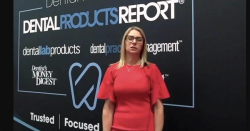- About Us
- Advertise
- Editorial
- Contact Us
- Terms and Conditions
- Privacy Policy
- Do Not Sell My Personal Information
© 2025 MJH Life Sciences™ and Dental Products Report. All rights reserved.
How to Win the Year of the Patient
The pandemic led many to relocate. Dentists should take advantage of newer technologies and software such as NexHealth, designed to allow practices to be more successful this year and in the foreseeable future.
The pandemic has affected this country in numerous ways, some of which are not immediately obvious. For example, 29% of Americans responding to a survey either relocated during COVID-19 or plan to within a year—a statistic that has more than tripled since before the pandemic.1 All of them will be looking for a new dentist, making 2022 the Year of the Patient.
This article will look at the results of a December 2021 NexHealth survey of nearly 1300 dental professionals who examined how they plan to grow their practices in 2022.1 There is a contrast in the strategies of low patient volume locations (fewer than 15 patients per day) and high patient volume locations (more than 35 patients per day) that shows what they are doing differently when creating patient experiences.
Data points from the survey include the following:
Dental practices are optimistic. Sixty-five percent of practices said they will have greater patient volume than prepandemic levels. Only 6% of practices believe their patient volume will be less than it was before the pandemic. Because I work with practices all over North America, my anecdotal evidence backs this up: Pretty much all my clients reported being busier in 2021 and the first part of this year than at any time in their practice’s history.
Customer satisfaction is the No. 1 priority. Survey respondents were given a list of objectives for 2022 and asked to assign each a score from least to most important. The top objective—by a wide margin—was improving customer satisfaction. This appears to be the new normal in dentistry; patients use many criteria when choosing their dentist and are often quick to make changes when their needs are not met.
Patient experience software adoption is ramping. Fifty percent of practices already use patient experience software to manage time-intensive tasks. Low patient volume practices can get away with manual processes, but the highest-performing practices are increasing marketing spend and process automation. Probably the best example of this is online scheduling. The practices that use this software have seen huge increases in productivity and are able to use that extra time for activities like marketing and continuing education. Many of our clients use a software system from NexHealth because it not only handles online scheduling but numerous other features such as online reviews, marketing campaigns, recall, and reporting.
Four “deal breakers” stand out for dental software. Dentists ranked “secure and reliable” as their No. 1 priority when choosing dental software. Those same dentists also want software that is easy to implement and manage, provides excellent customer service, and works with existing integrations. Brand recognition was last on the list. This should hopefully be a wake-up call for many of the dental software products owned by large dental supply companies, because several lack the bells and whistles that newer third-party software programs bring to the table.
Poor customer support is the No. 1 reason dentists change software. Respondents cited lack of quality service and support as the top reason they left their software providers. As many dentists know, changing software providers can be a huge challenge for a practice; it takes a lot for a dentist to be willing to go through that.
Social media is the top way practices plan to grow in 2022. Fifty-seven percent of respondents singled out social media as the way they planned to grow their practice in 2022. Other top responses were using online scheduling (40%) and adding more services/products (40%).
There’s little doubt that the “business as usual” approach is not necessarily the best strategy in 2022 as practices continue to take advantage of new technologies. A better understanding of where the industry is heading, combined with software systems like NexHealth, will allow practices to be more successful this year and in the foreseeable future.
Reference
1. State of dental: year of the patient, 2022. NexHealth. Accessed April 11, 2022. https://www.nexhealth.com/stateofdental2022?utm_source=lorne+lavine&utm_campaign=2022.Q1+-+Report+-+State+of+Dental+2022&utm_medium=partner&utm_content=state%2Bof%2Bdental%2Breport
Related Content:

 Download Issue: Dental Products Report May 2022
Download Issue: Dental Products Report May 2022

